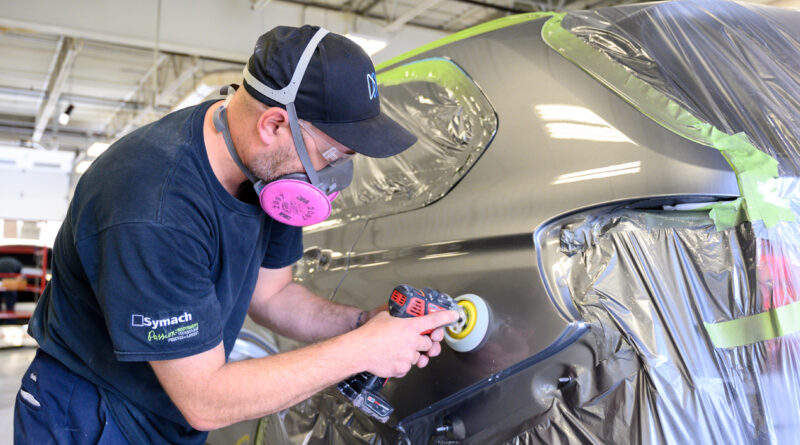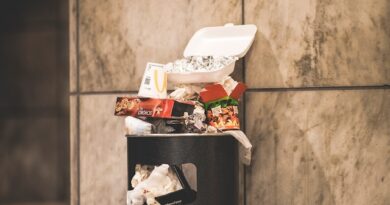Mastering Common Car Body Repairs: A Body Shop’s Challenge
Every car tells a story, and sometimes, those stories involve a few bumps and scrapes. Whether it’s a minor dent from a rogue shopping trolley or a more serious collision, car body repairs are a fact of life for many vehicle owners. As a body shop professional, you should know that addressing these common issues quickly and effectively is crucial for customer satisfaction and business success.
In this article, you’ll discover the most frequent car body repairs that keep body shops busy all across the US, whether it is a body shop in Austin or on the other side of the states in Washburn. From paint touch-ups to panel replacements, understanding these repairs will help you stay ahead in the competitive automotive repair industry. Let’s dive into the essential repairs every body shop should master to keep cars looking their best and customers coming back.
Dent Removal
Dents impact car aesthetics and value. Addressing them quickly enhances both appearance and resale potential. Body shops often employ dent removal techniques to restore the vehicle’s original look.
Paintless Dent Repair
Paintless dent repair (PDR) might intrigue you due to its efficiency and cost-effectiveness. PDR involves gently massaging the underside of the car panel to manipulate the metal back into shape. Specialists use tools like metal rods and body picks. Though ideal for minor dents and dings, PDR might not suit creased panels or damaged paintwork. Curious about its applicability to larger dents? It often depends on access to the rear of the panel and the extent of the damage.
Traditional Dent Repair
When PDR isn’t feasible, traditional dent repair becomes essential. This method involves sanding the damaged area, filling it with body filler, and then repainting it. Technicians might employ this for severe dents or scratched paintwork. You’ll see complex steps, yet the objective remains to restore the panel’s smoothness. Worried about paint matching? Skilled technicians use advanced techniques to ensure the new paint blends seamlessly with the car’s original finish.
Scratch and Paint Repair
Scratches and paint damage on cars are common, impacting appearance and value. Understanding the repair process ensures better outcomes.
Surface Scratches
Surface scratches are light marks that don’t penetrate the clear coat. A professional will likely begin by cleaning the area to spot the exact damage. Next, they’ll use a machine-polishing tool with a gentle abrasive to buff out the scratch. In some cases, you might just need a polishing compound applied by hand. This method restores shine and clarity without harming the underlying paint.
Deep Scratches
Deep scratches cut through the clear coat and into the paint or primer. These need a more detailed process for repair. Technicians start by sanding the area to remove rough edges. After sanding, a filler might be applied to even out the surface. Once it sets, they sand it smooth, reapplying primer if necessary. The final steps involve painting the area and clear-coating it. This layered work ensures a seamless finish.
Paint Matching
Paint matching is critical for a flawless repair. Shops use codes from your vehicle and advanced software to find the exact colour. They might then do a paint sprayout to compare and adjust for the best match. A skilled technician blends new paint with old to avoid noticeable differences. This attention to detail ensures the repair is invisible, maintaining your car’s factory finish.
Panel Replacement
Panel replacement is a common task in body shops, often linked to severe damage where minor repairs won’t suffice. This process includes replacing doors, fenders, and bumpers.
Doors
Doors can take a beating, especially in side-impact collisions. You might notice dents, creases, or even broken mechanisms. Body shops usually remove the damaged door, carefully align the new one, and match the paint. Does your door stick or fail to close properly? Technicians might find and fix alignment issues or latch problems that standard repairs can’t address.
Fenders
Fenders often suffer from impacts near the wheel. High-speed collisions or sideswipes can crumple fenders, making replacement necessary. Skilled technicians remove the damaged fender, ensuring no hidden damage exists. Installation of the new fender follows. Have you noticed uneven gaps between panels? Proper fender installation restores smooth lines, ensuring the vehicle’s aesthetic appeal and structural integrity.
Bumpers
Bumpers are the first line of defence in any collision. Even minor bumps can cause significant damage. Replacing a bumper involves removing the cracked or dented bumper, checking the underlying structure, and fitting the new part precisely. Does your car’s look seem off after a minor accident? With proper bumper replacement, shops ensure seamless integration with the car’s design and functionality.
Frame Straightening
Frame straightening is crucial to restoring a vehicle’s structural integrity after an accident. Body shops use precise techniques to ensure frames return to their original specifications.
Identifying Frame Damage
Detecting frame damage can be challenging. Damaged frames might show signs like uneven gaps between panels, misaligned doors, or a car pulling to one side. You might also notice creased or bent sections of the frame underneath the vehicle.
Frame Alignment Techniques
Body shops use advanced equipment for frame alignment. Machines with laser precision measure the frame’s deviations. Technicians then use hydraulic tools to apply controlled pressure, carefully straightening bent areas. Modern systems can store vehicle measurements, ensuring accurate realignment and safety.
Rust Repair
Rust repair is crucial for maintaining your car’s aesthetics and integrity. Rust can spread quickly, so early treatment is essential.
Surface Rust Treatment
Surface rust appears as small, reddish-brown spots on the car’s exterior. Catching rust early can save you from extensive repairs. Begin by cleaning the affected area with soap and water, then sanding the rust spots down to bare metal. Next, apply a rust converter to prevent further oxidation. Finally, prime and paint the treated area to match your vehicle’s existing paintwork. Regularly washing and waxing your car helps prevent surface rust from forming.
Structural Rust Repair
Structural rust weakens the car’s frame, compromising safety. You need expert intervention for repairing structural rust. Body shops typically remove the affected area using a grinder or cutter, then weld metal patches onto the frame. It’s essential to treat and paint the new metal to prevent future rusting. Structural rust repair ensures your car’s safety and longevity. Be proactive and inspect your car’s underbody periodically to catch any signs of structural rust early.
Final Thoughts
Understanding the variety of common car body repairs can significantly enhance your body shop’s efficiency and customer satisfaction. Whether it’s paint touch-ups, dent removal or more complex tasks like panel replacement and frame straightening each repair requires precision and expertise. By mastering these techniques and maintaining high standards in rust repair and paint matching you’ll ensure your customers’ vehicles remain safe and visually appealing. Investing in advanced equipment and continuous training will keep your body shop at the forefront of the industry ensuring long-term success and a loyal customer base.




